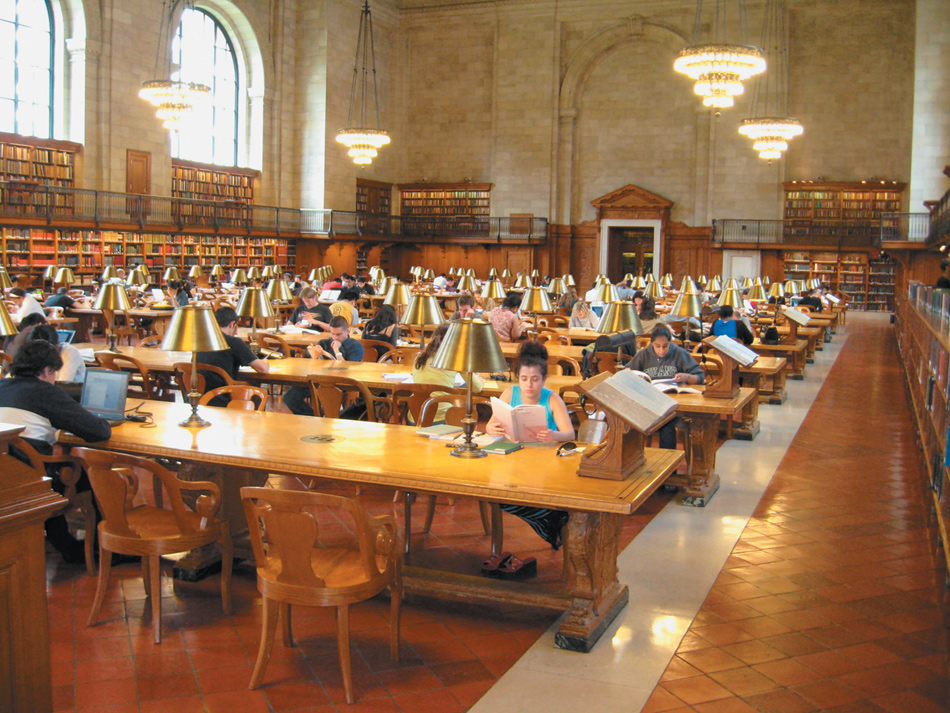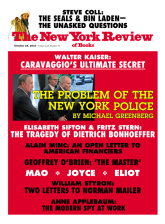In response to:
'In Defense of the New York Public Library': An Exchange from the July 12, 2012 issue
To the Editors:
Polemics rarely lead to happy endings. They usually produce hard feelings and a hardening of positions, rather than mutual understanding and mutually acceptable results. The loud debate about the Central Library Plan (CLP) of the New York Public Library may, however, be an exception to this rule—not that it has come to an end, but it has reached a turning point, which should satisfy both sides.
Critics of the CLP were especially incensed about its provision to remove books from the seven levels of stacks under the Rose Main Reading Room and ship them to offsite storage in order to make room for a circulating library to be installed on the lower floors. They petitioned, they provoked a debate—some of it conducted in these pages [Letters, NYR, July 12]—and they were heard.
After studying the problem further, a committee of the library’s trustees has made the following recommendations, which were accepted by the full board on September 19:
• Another level of stacks under Bryant Park will be developed, creating room for onsite storage of another 1.5 million books.
• Books shipped to ReCAP, the offsite storage facility in Princeton, New Jersey, from the onsite collection will mostly be works that are already digitized and available online.
• The library will make a firm commitment to deliver books from ReCAP within twenty-four hours, provided that the orders are placed before 2:30 PM on weekdays. Orders can also be made online from home and on Saturdays for Monday. Additional resources will be allocated, if necessary, to guarantee the effectiveness of the twenty-four-hour deadline.
• New curators will be hired to expand collections and improve services in a half-dozen special fields.
These changes should go a long way toward satisfying the desire of researchers to follow up leads and check references by consulting works that are stored a short distance from their desks. Thanks to the new level under Bryant Park, the library will retain in onsite storage 3.3 million of the 4.5 million books now housed at the library. While these books will not include all of the three million books now stored under the Rose Main Reading Room, they will include most of them while providing substantial space for others: librarians will cull from the current onsite collection physical copies of works that have been digitized and a small number of books that are never or very rarely read, making room for another million books under Bryant Park in the future if needed. And all of them will be stored in excellent conditions, unlike those in the old stacks, which lack adequate temperature controls.
There is no escape from the need to rely on offsite storage in the long run, but readers can expect immediate improvement in the service from ReCAP (where temperature controls are optimal), thanks to an easy system of ordering in advance. The onsite collections will contain a greater proportion of the books most used by researchers, who also will have easy access to the current literature available in the circulating library.
Of course the quality of collections depends on the skill of the librarians who do the selecting and place the orders. The critics of the library rightly lamented the neglect of its great Baltic and Slavic collection, whose curator was reduced to a half-time position. The library has now redressed the situation by creating another, full-time position, and it is raising funds to hire expert librarians who will curate collections concerning the Middle East, Latin America, and the humanities in general, which have never had specially designated curators. There will also be fund-raising for curators of collections in the Library for the Performing Arts at Lincoln Center and the Schomburg Center for Research in Black Culture in Harlem.
All of the library’s special collections will remain where they are, properly stored and curated, in the main building at 42nd Street and Fifth Avenue. Researchers who use them as well as the general collection in the humanities and social sciences will be able to work in specially equipped reading rooms on the second floor. That floor contains handsome rooms along its central and south corridors, which can be refurbished and made available to readers. Some of them will be opened as soon as possible rather than after the completion of the CLP five or so years from now. The restoration of the second floor—without any changes in the imposing architectural features—will accommodate the needs of visitors from outside New York as well as New Yorkers who work as independent researchers.
The loneliness of the long-distance researcher isn’t adequately understood by people who enjoy the support of universities or other institutions. The New York Public Library has always done its best to provide for their needs, notably in its Wertheim Study and Allen Room. Now it will more than double the space made available to them, including faculty and students from the City University of New York, who have always relied on the library for doing research.
The trustees, myself included, have not yet seen a detailed plan for remodeling the lower floors of the library to make room for the circulating library that will replace the Mid-Manhattan branch. But the board is committed to respecting the integrity of the original architecture, including the public study rooms on the second floor as well as the façades. One internal wall on the ground floor would be removed to allow more use of the 42nd Street entrance. The principal space to be changed will be the storage area under the Rose Main Reading Room, which has never been open to the public, and much of its material, notably the ironworked bookshelves, will be incorporated in the design for the new circulating library.
Those plans are still being developed, and no doubt there will continue to be disagreement about them. But the public debate has served the public well, and the debaters should know not only that they have been heard but also that they have had an effect in shaping the biggest change in the library since it opened 101 years ago.
Robert Darnton
Carl H. Pforzheimer University Professor
Director of the Harvard University Library
Harvard University
Cambridge, Massachusetts




